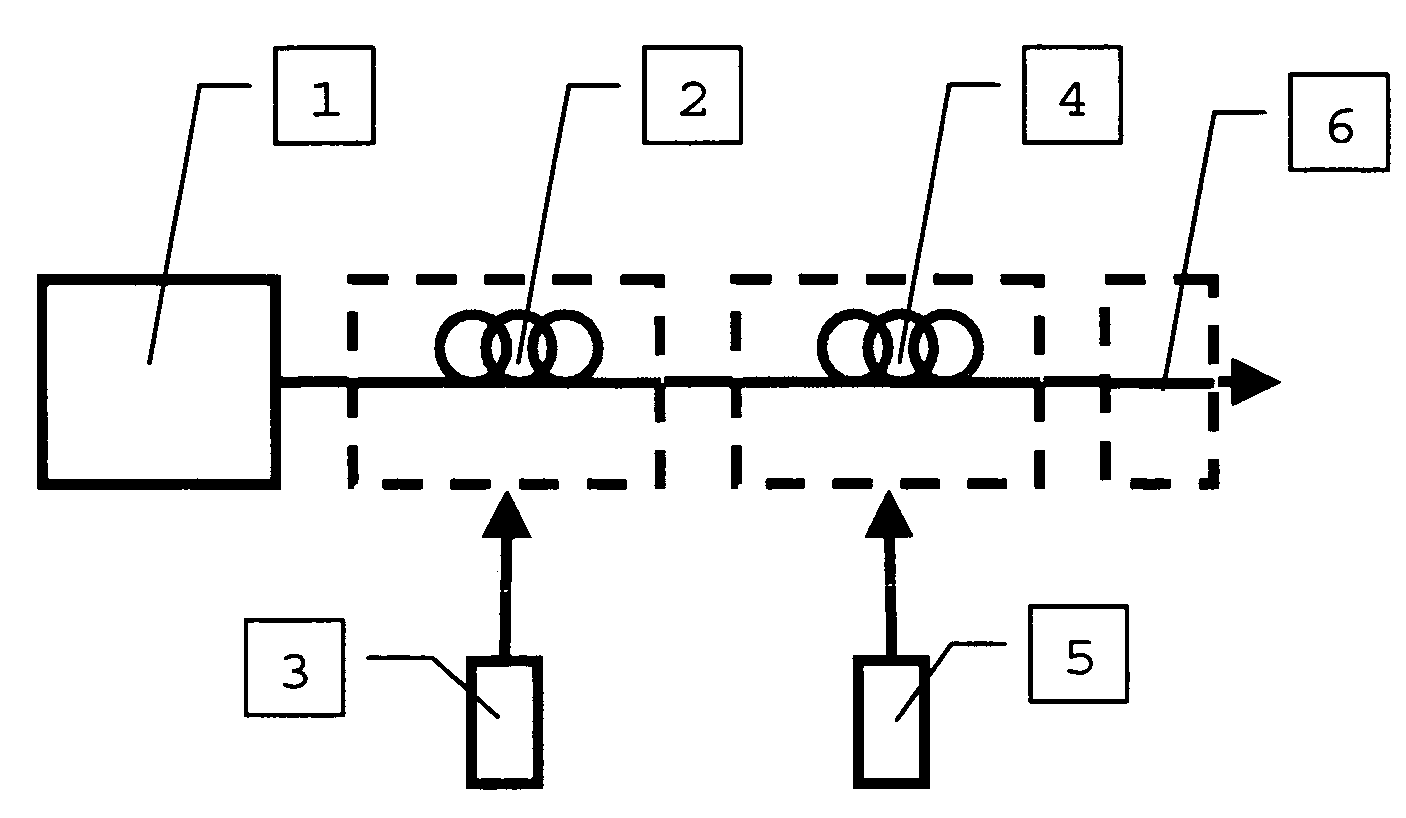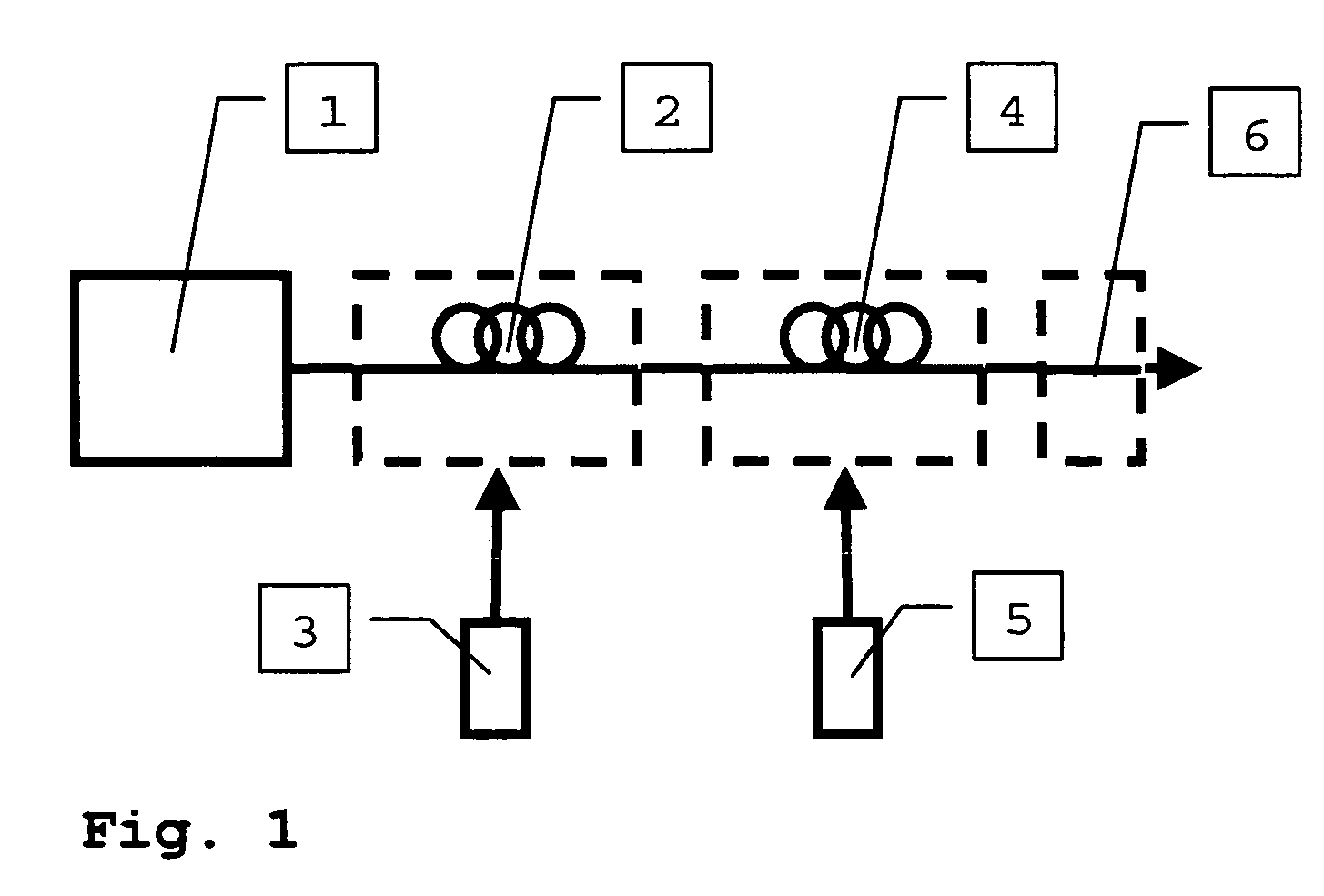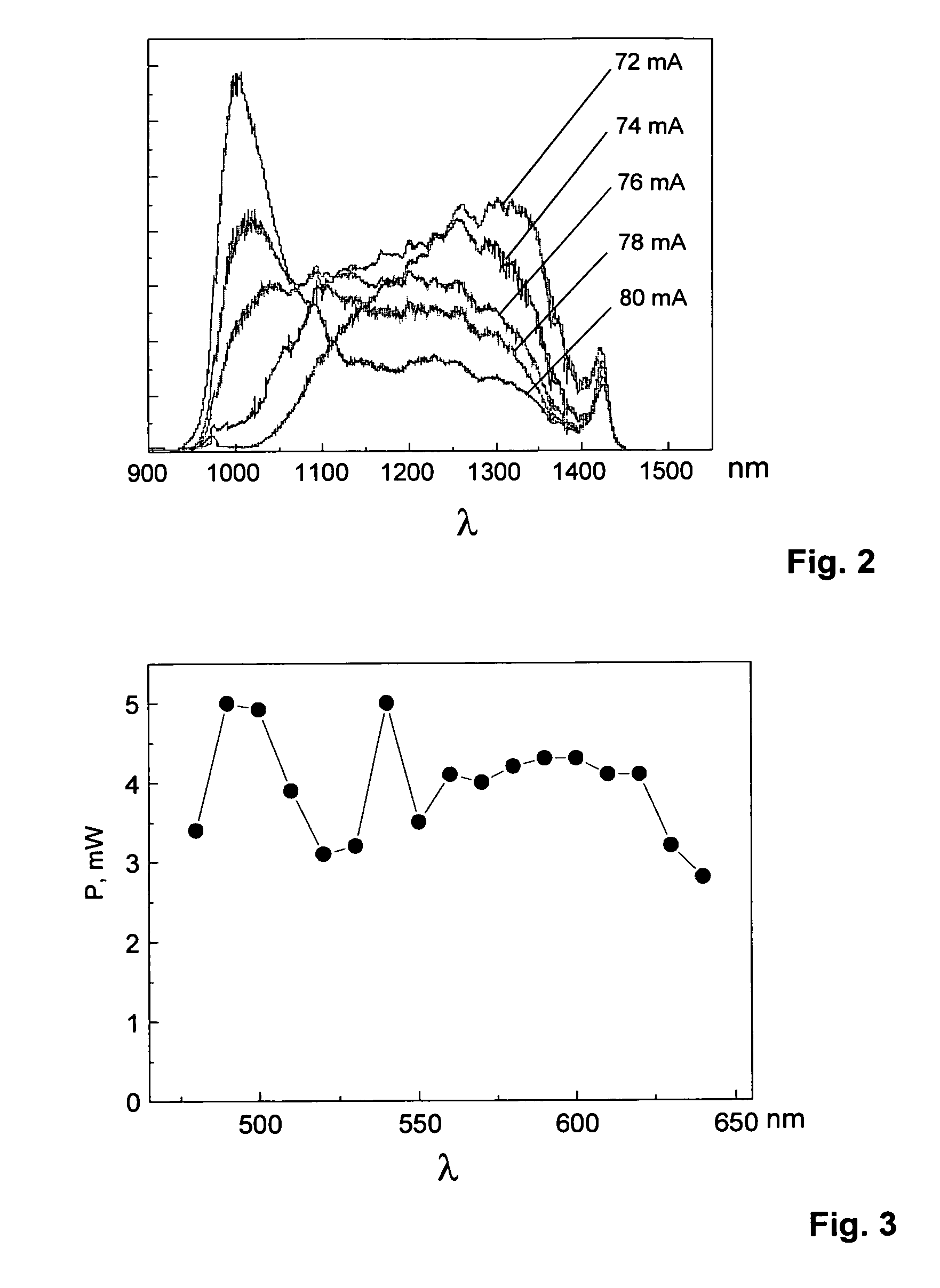Device for generation of tunable light pulses
a technology of light pulses and devices, applied in the direction of instruments, electrical equipment, laser details, etc., can solve the problems of large free space sections containing bulk elements, undesirable coupling losses, and low tuning speed, and achieve the effect of increasing pulse energy and high pulse energy
- Summary
- Abstract
- Description
- Claims
- Application Information
AI Technical Summary
Benefits of technology
Problems solved by technology
Method used
Image
Examples
Embodiment Construction
[0027]Turning now in detail to the drawings, FIGS. 1, 4 and 5 show embodiments of the device of the invention, which comprises a seed laser source 1. The seed laser source 1 is a fiber-based pulsed laser light source, which emits femtosecond light pulses. The seed laser source 1 can be a commercially available pulsed fiber laser. The use of a free-beam laser as the seed laser source 1 is also feasible, however. The seed laser source 1 generates input light pulses at a wavelength of 1.56 μm, i.e. in the infrared spectral range, at a repetition rate of, for example, 40 MHz. The pulse duration of the input light pulses generated by the seed laser source 1, is, for example, 500 fs.
[0028]The input light pulses are received by an optical pre-amplifier, which is connected to the seed laser source 1 via a splice connection. In the depicted embodiments, the optical pre-amplifier is an optically pumped fiber amplifier comprising an Erbium-doped fiber section 2 and a pump diode 3, which emits ...
PUM
 Login to View More
Login to View More Abstract
Description
Claims
Application Information
 Login to View More
Login to View More - R&D
- Intellectual Property
- Life Sciences
- Materials
- Tech Scout
- Unparalleled Data Quality
- Higher Quality Content
- 60% Fewer Hallucinations
Browse by: Latest US Patents, China's latest patents, Technical Efficacy Thesaurus, Application Domain, Technology Topic, Popular Technical Reports.
© 2025 PatSnap. All rights reserved.Legal|Privacy policy|Modern Slavery Act Transparency Statement|Sitemap|About US| Contact US: help@patsnap.com



